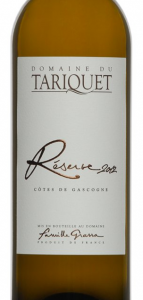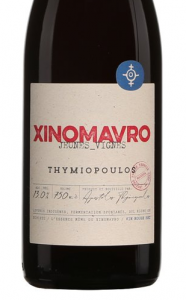I’m kicking off the week with a nice, easy list of wine recommendations, because who wants to wander aimlessly down the liquor store aisles when you could be basking in the sun? Instead, just pick up these great summer wines under 20$.
Spring is a blink-and-you-miss-it season here in Montréal. The snow melts overnight, and trees sport fully mature leaves in a single week-end. Friends you have barely seen through the long, frigid winter are once again your regular aperitif companions. And everyone is in the mood to celebrate.
Come August and we have settled into summer. The rosé craze is losing steam, but we still need thirst quenching whites for our 5 à 7 (aka happy hour) get togethers, fuller bodied whites to pair with seafood, and smooth, easy-drinking barbecue reds.
Here is a round-up of delicious summer wines under 20$, tasted at industry events and or received as samples over the past few months.
Famiglia Cecchi Val delle Rose Litorale Maremma Toscana DOC 2017, Tuscany, Italy
Litorale means coastal in Italian. With vineyards hugging the Tyrrhenian Sea, and a label featuring colourful beach chairs, this wine screams summer. It is composed of mainly Vermentino, a white wine grape planted widely in Southern Italy and France. The nose features whiffs of briny sea breezes, lemon, and hints of chamomile. The palate is light, fresh and unoaked, with a dry, saline finish. Very satisfying on a hot summer’s eve.
Where to buy: SAQ
Château Dereszla Tokaji Dry 2017, Tokaj, Hungary
A crisp, light bodied, dry white wine crafted mainly from the native Hungarian grape Furmint. Features subtle yet attractive floral, yellow pear and apple aromas. Hints of white pepper and fennel add interest on the finish. Perfect white to sip on while preparing dinner.
Château de Pocé Touraine Sauvignon Blanc 2018, Loire Valley, France
This is a great Sauvignon Blanc for consumers looking to segue from an exuberantly grassy New Zealand style towards the more taut, racy whites of Sancerre and Pouilly Fumé. Lipsmacking acidity underscores really vibrant gooseberry, lemon, herbal flavours here. The palate is lean, dry, and unoaked. Great with a goat’s cheese salad or grilled fish.
Where to buy: SAQ
Domaine Tariquet Réserve 2017, Côtes de Gascogne, France
A clear step up from Tariquet’s classic cuvée, the Réserve is a very harmonious blend, with the vibrant acidity and citrus tang of Gros Manseng and Sauvignon Blanc nicely balanced by the rounded, weighty structure of Chardonnay. Finishes dry, with a pleasing hint of toasted oak. This refreshing white drinks very well on its own, but has enough body to also marry well with lighter seafood, white fish, salads, etc.
Where to buy: SAQ
Niepoort Diálogo 2018, Douro Valley, Portugal
This delicious Portuguese white offers consistent good value vintage after vintage. Made from equal parts Codega, Doña Blanca, Gouveio, Rabigato, indigenous white grapes of the Port region, it is bright and citrussy on the nose, with underlying white floral and mineral hints. The palate is light, smooth and dry with a pleasingly creamy, textured mid-palate. Very versatile white food pairing wine.
Where to buy: SAQ
Domaine Thymiopoulos Jeunes Vignes de Xinomavro 2017, Naoussa, Greece
It’s not every day you see a winery proudly heralding “young vines” on their label. This unoaked red is just bursting with tart, juicy red fruit flavours. It is silky smooth, and really refreshing with a Pinot Noir or Gamay-like feel to it. If you like lighter, tangier reds, this one is for you! Serve slightly chilled.
Malivoire Gamay Noir 2017, Niagara Peninsula, Canada
A smooth, easy drinking Niagara Peninsula Gamay brimming with tart red berry, cranberry, and rhubarb flavours. It is medium in body, with brisk acidity and soft tannins. Would pair well with a charcuterie plate.
Petit Tracteur Côtes du Rhône Rouge 2017, France
A newcomer to Québec, this smooth, easy-drinking Côtes du Rhône red features Syrah in a starring role, with Grenache making up just 40% of the blend. The nose offers lovely hints of macerated red cherry and spice. The palate is medium weight, with a rounded structure, and enticing peppery hints on the finish. Great everyday barbecue wine.
Where to buy: SAQ
Allegrini La Bragia 2016, Rosso Veneto, Italy
I served this blind at my last book club evening and the ladies loved it. Quite herbal on the nose, with rich red and dark berry flavours developing with aeration. The palate is medium-bodied, with tangy acidity, smooth, ever so slightly chalky tannins, and lifted red fruit flavours. Subtle cedar notes linger on the finish. Would pair well with tomato-based dishes, or herb-crusted roasted meats.
Where to Buy: SAQ
Sassoregale Maremma Toscana 2017, Tuscany, Italy
The coastal vineyards of Maremma in Tuscany are an excellent source for Sangiovese, in a riper, plusher style than Chianti. This lovely red offers tempting notes of black plum, blueberry, red cherry and spice on the nose. The palate is medium weight, with refreshing acidity, a velvety texture and fine, subtly grainy tannins. Great for all manners of grilled or roasted red meats.
Where to buy: SAQ














